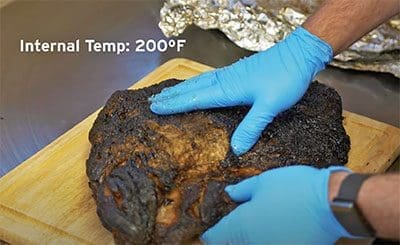The term “low & slow” has become synonymous with, if not cliche, BBQ cooking. It is our belief that to truly understand “low and slow” one needs to take a little deeper look at the physics behind the cooking method.

“Low and Slow” is a method of cooking typically involves cuts of beef, or other meat, that have a lot of connective tissue, silver skin and/or well developed muscle structure. What happens in the low and slow process that makes it unique is the slow and steady application of heat to bring then entire internal temperature of the cut up to a high enough temperature to render fat and collagen fibers that make the meat tough. If the heat is applied too rapidly, it can result in the outside becoming burned and the middle of the cut remaining tough and uncooked.
“The stall” A phenomena that occurs when cooking large pieces of meat at relatively low temperature. The stall typically occurs when the internal temperature is between 150° F and 170° F. It is tempting to add more temperature to move through the stall more quickly, but the best solution is to allow the requisite time to move through the stall naturally. The stall is a bit of a mystery, but most likely caused by evaporative cooling – the same thing that happens when we sweat on a hot summer day – and it takes time for the moisture level in the meat to reduce to a level that will allow the internal temperature to continue up to the finishing temperature, usually just over 200° F internal. Stalls can last for hours, have faith in and patience with the process…this is in fact where the “slow” part of “low & slow” originates.

“Time to rest” Good grief…it’s been cooking for 9 hours and now it needs to rest for another hour or two…?? Yep. In our experience, resting is absolutely critical whether it is the most tender corn fed filet mignon or the toughest grass fed brisket on the internet. Resting allows the meat to relax and the internal temperature to equalize. It also allows for any remaining collagen and fat to cook down and render completely.
How does low & slow apply to roasts besides the brisket? Both lean cuts like Rump Roast and fatty cuts like Chuck Roasts do very well with the low and slow method.
Rump roast can be cooked low & slow to two different finishes:
Option 1. Love roast beef from the deli?? A low & slow trip up to 145-155° F will turn a plain old rump roast into some of the best deli cuts to ever find their way between two slices of bread. It doesn’t require any seasoning, but a day or two in a brine won’t hurt a thing.
Option 2. Leave it in the oven until it reaches an internal temperature of around 200° F, then let it rest for an hour or two. Shred with a pair of forks for delicious shredded beef, or slice and serve with mashed potatoes for a meal that will take you down memory lane.


Chuck Roasts are tailor made for low & slow, and are best cooked to a fairly high finish temp. Chuck roasts do great when cooked with some root vegetables in a covered roasting pan. Cooking low & slow in the wet environment helps to keep the roast moist while still rendering the fat and connective tissue completely. This is another classic presentation that comes standard with a heaping side of nostalgia.
Low & Slow works for all variety of meat, and it is the best answer for cuts that are tough or ones that contain a lot of connective tissue, regardless of the type of meat. Keep the scientific principle behind the cooking method in mind and don’t forget to be patient, the results are well worth the time invested.







